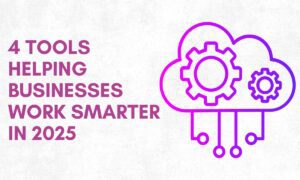Introduction:
In the dynamic landscape of business analysis, the question of whether a business analyst needs coding skills has been a subject of much debate. As technology continues to evolve, the role of a business analyst has expanded beyond traditional boundaries. In this comprehensive guide, we will delve into the intricacies of the relationship between business analysis and coding, exploring the advantages, challenges, and evolving expectations in the industry.
Understanding the Basics:
Business analysts are professionals who bridge the gap between business needs and technological solutions. They play a pivotal role in translating complex business requirements into actionable plans for development teams. Traditionally, the emphasis on coding skills for business analysts was minimal, as their primary focus was on gathering and analyzing business requirements.
However, with the advent of technology-driven business environments, the landscape has shifted. Businesses are increasingly leveraging technology to enhance their processes and gain a competitive edge. This has led to a growing expectation for business analysts to have a basic understanding of coding languages.
Advantages of Coding Skills for Business Analysts:
1. Improved Communication with Development Teams:
Having coding skills allows business analysts to communicate more effectively with development teams. Understanding the technical nuances enables them to convey requirements in a language that developers comprehend, reducing the likelihood of misinterpretations.
2. Enhanced Problem-Solving Abilities:
Coding skills empower business analysts to identify and solve issues at a deeper level. They can analyze technical challenges, propose viable solutions, and collaborate seamlessly with developers to implement effective strategies.
3. Streamlined Requirement Documentation:
Business analysts with coding knowledge can create more precise and detailed requirements documents. This clarity helps development teams understand project expectations, minimizing the chances of errors or misunderstandings during the implementation phase.
4. Increased Adaptability:
The digital landscape is in a constant state of flux, with new technologies emerging regularly. Business analysts with coding skills are better equipped to adapt to these changes, ensuring they remain valuable assets to their organizations.
Challenges of Coding for Business Analysts:
1. Time Constraints:
Learning coding languages takes time, and business analysts often operate under tight schedules. Balancing the demands of their primary responsibilities with coding education can be challenging.
2. Divergence from Core Responsibilities:
Some argue that adding coding skills to the business analyst’s toolkit may lead to a diversion from their core responsibilities. Striking the right balance between technical and business expertise is crucial.
3. Evolving Technology Landscape:
Coding languages and technologies evolve rapidly. Business analysts need to invest time in staying updated, which can be a perpetual challenge.
4. Varied organizational expectations:
The coding expectations for business analysts vary across organizations. While some companies prioritize coding skills, others may consider them optional.
The Evolving Landscape:
In recent years, there has been a paradigm shift in how organizations perceive the role of business analysts. Many employers now seek professionals with a hybrid skill set—a blend of business acumen and technical prowess. The rise of low-code and no-code platforms has also influenced this shift, allowing business analysts to engage with technology without extensive coding knowledge.
Low-Code and No-Code Platforms:
Low-code and no-code platforms are transformative technologies that have gained significant traction in recent years. These platforms offer a revolutionary approach to application development by providing a visual interface and pre-built components, enabling individuals with varying levels of technical expertise, including business analysts, to create applications with minimal coding requirements.
Low-Code Platforms:
Low-code platforms are designed to streamline the application development process by minimizing the amount of hand-coding required. They provide a visual development environment where users can drag and drop components, define logic through graphical interfaces, and configure application features with minimal coding. Low-code platforms are particularly beneficial for business analysts who want to actively contribute to the development process without mastering complex coding languages.
A. Visual Development Environment:
Users can leverage a visual interface to design, prototype, and develop applications. This approach simplifies the development lifecycle, making it accessible to those with limited coding experience.
B. Reusable Components:
Low-code platforms often come with a library of pre-built components that users can incorporate into their applications. This promotes reusability, reduces development time, and ensures consistency across different projects.
C. Workflow Automation:
Business analysts can define workflows and automate business processes through visual tools. This empowers them to optimize and enhance business operations without delving into intricate coding processes.
No-Code Platforms:
No-code platforms take simplicity a step further by eliminating the need for any coding or scripting. These platforms cater to users who may not have a technical background but still want to participate in the creation of digital solutions. No-code platforms use a visual approach that allows users to build applications through a series of clicks, selections, and configurations.
A. Drag-and-Drop Functionality:
Users can build applications by dragging and dropping predefined elements onto a canvas. This intuitive process makes it possible for individuals with no coding knowledge to create functional and scalable applications.
B. User-Friendly Interfaces:
No-code platforms prioritize user-friendly interfaces, ensuring that even those without technical expertise can navigate and utilize the tools effectively. This democratization of application development enables a broader range of professionals to contribute to digital initiatives.
C. Rapid Prototyping:
No-code platforms are ideal for rapid prototyping and iterative development. Business analysts can quickly create prototypes to gather feedback, iterate on designs, and refine applications without the need for extensive coding cycles.
D. Accessibility for non-developers:
Perhaps the most significant advantage of no-code platforms is their accessibility for non-developers. This empowers business analysts, subject-matter experts, and other professionals to actively participate in the creation of applications without relying on dedicated development teams.
The Impact on Business Analysts:
Low-code and no-code platforms are transforming the role of business analysts by providing them with tools to actively engage in the development process. These platforms allow business analysts to:
A. Prototype and validate concepts:
Business analysts can quickly prototype and validate concepts, allowing stakeholders to visualize potential solutions before investing significant time and resources.
B. Facilitate Collaboration:
Collaboration between business analysts and development teams becomes more seamless as these platforms provide a common ground for understanding and communication.
C. Accelerate Time-to-Market:
The rapid development capabilities of low-code and no-code platforms contribute to accelerated time-to-market for applications, aligning with the fast-paced nature of modern business environments.
D. Adapt to changing requirements:
Business analysts can respond swiftly to changing business requirements by iteratively modifying and improving applications without extensive coding efforts.
low-code and no-code platforms are pivotal in reshaping how business analysts approach application development. These technologies empower business analysts to become active contributors to the development lifecycle, fostering collaboration, innovation, and agility within organizations. As the landscape continues to evolve, these platforms will likely play an increasingly crucial role in bridging the gap between business needs and technology solutions.
Conclusion:
The debate over whether business analysts need coding skills is nuanced and depends on various factors, including organizational expectations, the nature of the industry, and the individual’s career goals. While coding skills can undoubtedly enhance a business analyst’s capabilities, they are not mandatory for success in the field. Striking a balance between technical proficiency and core business analysis skills is key, and the rise of low-code and no-code platforms provides alternative pathways for professionals in this dynamic and ever-evolving field. As businesses continue to embrace technology, business analysts must remain adaptable, continuously learning, and evolving to meet the demands of the modern business landscape.

































